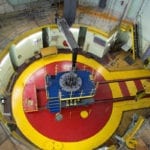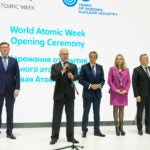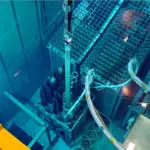The first Russian-made nuclear reactor fuel bundles with experimental ATF (Advanced Technology Fuel) rods have been loaded into Unit 2 at the Rostov nuclear power plant (NPP) in southwest Russia. The reactor resumed operations earlier this month after a scheduled maintenance and refueling outage.
The Rostov site is home to four VVER-1000 reactor units (Figure 1), which entered commercial operation in 2001, 2010, 2014, and 2018, respectively. The core of the VVER-1000 reactor design contains 163 fuel assemblies, each with 312 fuel rods. Typically, a third of the fuel assemblies are replaced during a refueling outage. Three of the fuel assemblies loaded during the latest refueling at Rostov Unit 2 contain experimental fuel rods—12 rods in each assembly—which will allow the innovative fuel to be demonstrated in a commercial reactor.
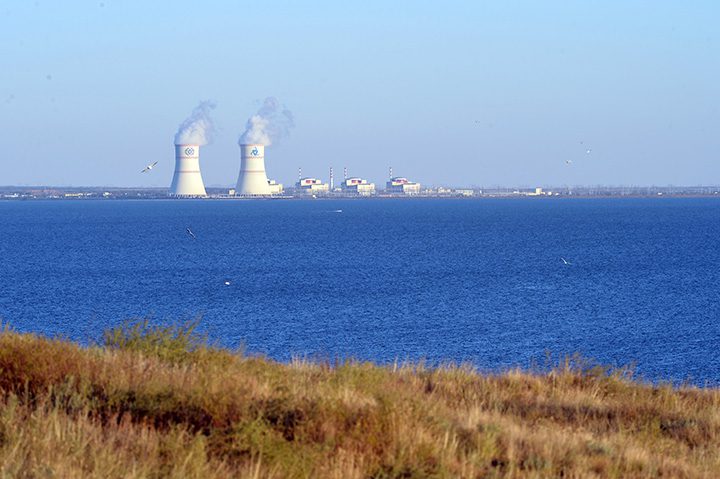
ATF Improves Reactor Safety
ATF is resistant to severe beyond-design-basis accidents at NPPs that experience a loss of coolant in the reactor. Even in the case of heat removal failure in the core, ATF is designed to maintain its integrity long enough to prevent a zirconium-steam reaction from inducing hydrogen release. ATF is of critical importance for further elevating the integral safety and reliability of nuclear power.
The fuel assemblies loaded at Rostov have two types of experimental fuel rods (Figure 2). Both utilize uranium dioxide fuel, but six of the rods are clad with zirconium alloy containing a chromium coating, while the other six are clad with 42XHM, which is a chromium-nickel alloy.
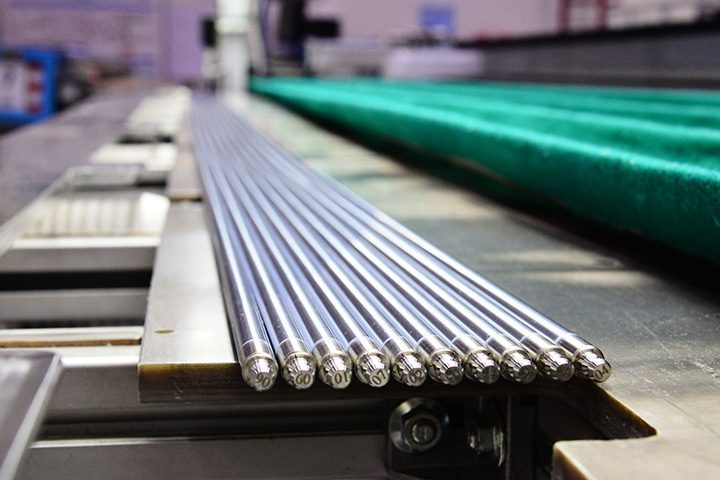
The experimental fuel bundles are expected to last for three fuel cycles, which run approximately a year and a half each. After the pilot operation, the rods will be allowed to cool for a period in the unit’s spent fuel pool, after which the bundles will undergo post-irradiation examinations in hot cells at the Research Institute of Atomic Reactors in Dimitrovgrad, in the Ulyanovsk region.
“Fuel irradiation in a commercial reactor is an important step for the further commercialization of this product,” Natalia Nikipelova, president of TVEL Fuel Co., the Fuel division of Rosatom, said in a statement issued to POWER. “ATF development is the major global trend in nuclear power industry, which is aimed at bringing the safety of nuclear power plants to the new level, practically eliminating the probability of accidents with negative impact for the environment. Some ATF options with alternative fuel matrix could also make operations more economically efficient without increasing the level of uranium enrichment. According to international analysts, this product will dominate the global market in a relatively short term,” she said.
Additional Testing in Progress
Rosatom told POWER that two fuel assemblies with samples of VVER and pressurized water reactor (PWR) size fuel rods were manufactured in late 2018. These were loaded into water loops of the MIR research reactor at the Research Institute of Atomic Reactors. MIR is a loop-type research reactor, designed mainly for testing fuel elements, fuel assemblies, and other core components for different types of both operational and under-development nuclear power reactors.
The assemblies loaded in MIR are somewhat different from fuel actually used in power reactors. Instead, they’re small bundles designed for the research. And while the assemblies loaded in both the Rostov and MIR reactors have two cladding variations, the MIR assemblies also contain different fuel types. In addition to uranium dioxide fuel, the MIR project is testing fuel pellets made of uranium-molybdenum alloy with increased density and thermal conductivity.
Based on the research results, Rosatom plans to choose the optimal combination of structural and fuel materials, taking into account technical and economic performance. After two irradiation cycles, Rosatom reported that all fuel rods loaded in the MIR water loops remain hermetically sealed, which is a positive sign, indicating that the testing is going well.
Further Advancements and Commercialization
This year, Rosatom expanded its ATF program with another fuel matrix material option: uranium disilicide. A spokesperson for the company told POWER uranium disilicide has a number of advantages. First, it has a high density and uranium content, which may enable introduction of longer fuel cycles without increasing the enrichment level. Second, it has high thermal conductivity and low heat capacity, which means less accumulated heat in the reactor core and lower cladding temperatures. Third, the lower operating temperature may improve the performance characteristics of the fuel in general.
There is a well-defined process in the nuclear industry for testing and commercialization of new fuel types. The Rosatom project team chose ATF fuel rods with a standard fuel matrix of uranium dioxide for the Rostov project as a conservative measure. This corresponds with the practice of fuel development programs worldwide, which generally move at a gradual pace when introducing new fissile and structural materials. Research, design, and testing of the accident tolerant fuel in TVEL Fuel Co. is provided and coordinated by the Bochvar High-Technology Scientific Research Institute of Inorganic Materials.
A great deal of analysis must be completed before a reactor is fully loaded with new fuel bundles (Figure 3). Rosatom explained that cladding material decisions are typically a big part of the first stage, but the next step may involve changes in the fuel matrix. Fuels made of uranium-molybdenum alloy and uranium disilicide not only have better thermal conductivity properties, but also a higher density. This could help advance the economy of the fuel cycle, which will be important going forward. “To put it simple, one pellet will contain more enriched uranium and generate more energy,” the spokesperson said.
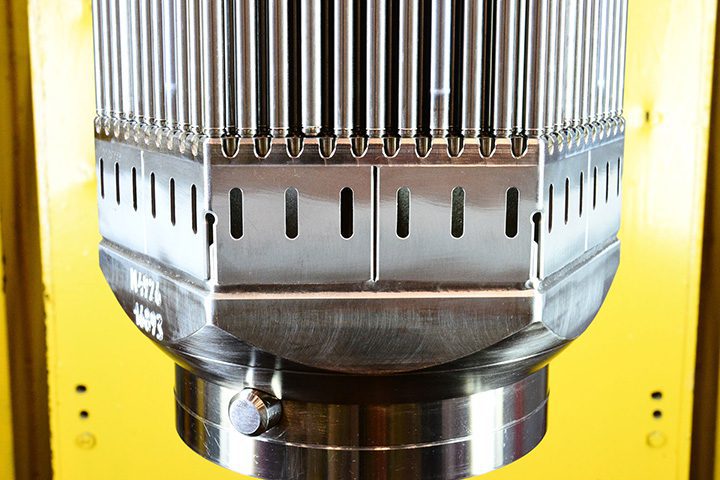
Rosatom has expertise in manufacturing PWR fuel and has developed its own PWR fuel assembly design called TVS-K. “If our partners among the PWR operators are interested in supplies of TVS-K in ATF version, and the market in fact is surely interested, we shall provide such option,” the spokesperson told POWER.
—Aaron Larson is POWER’s executive editor (@AaronL_Power, @POWERmagazine).







